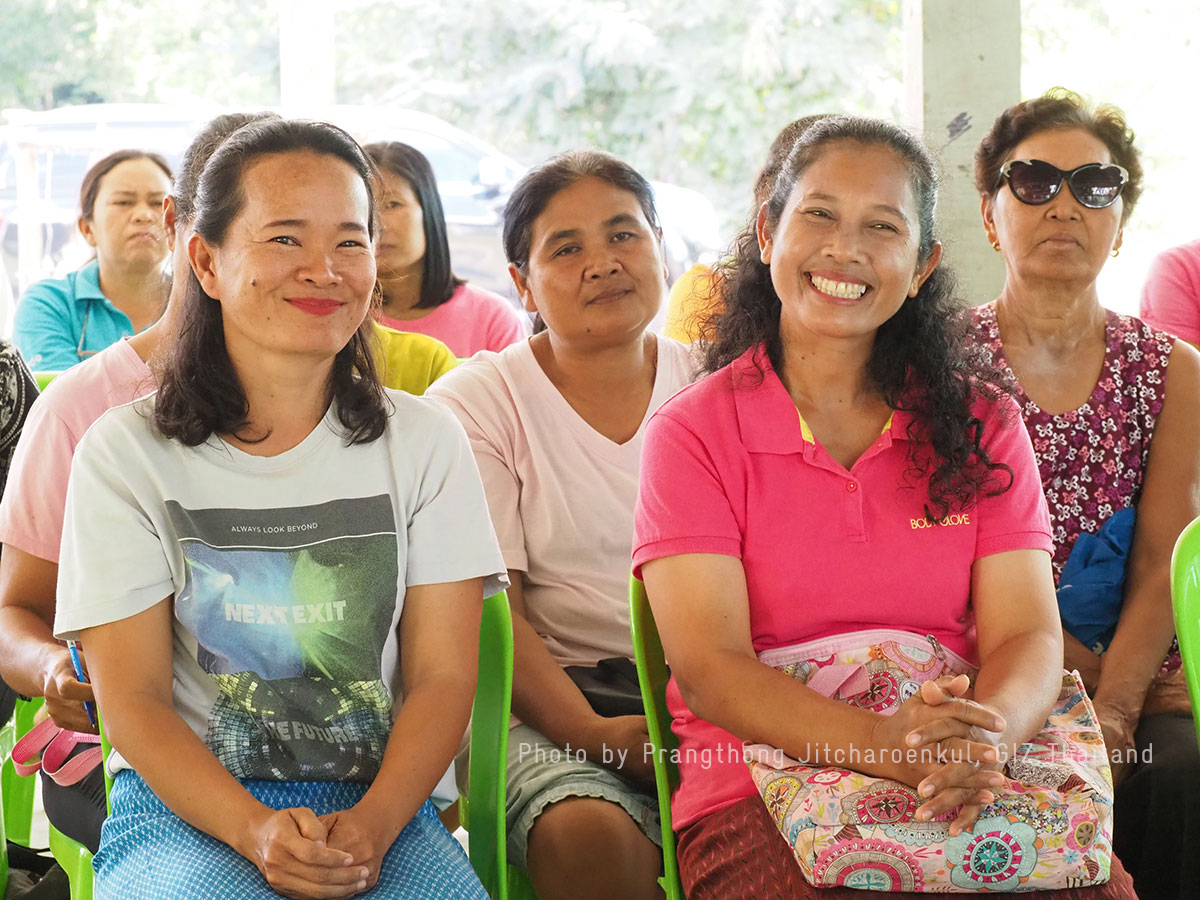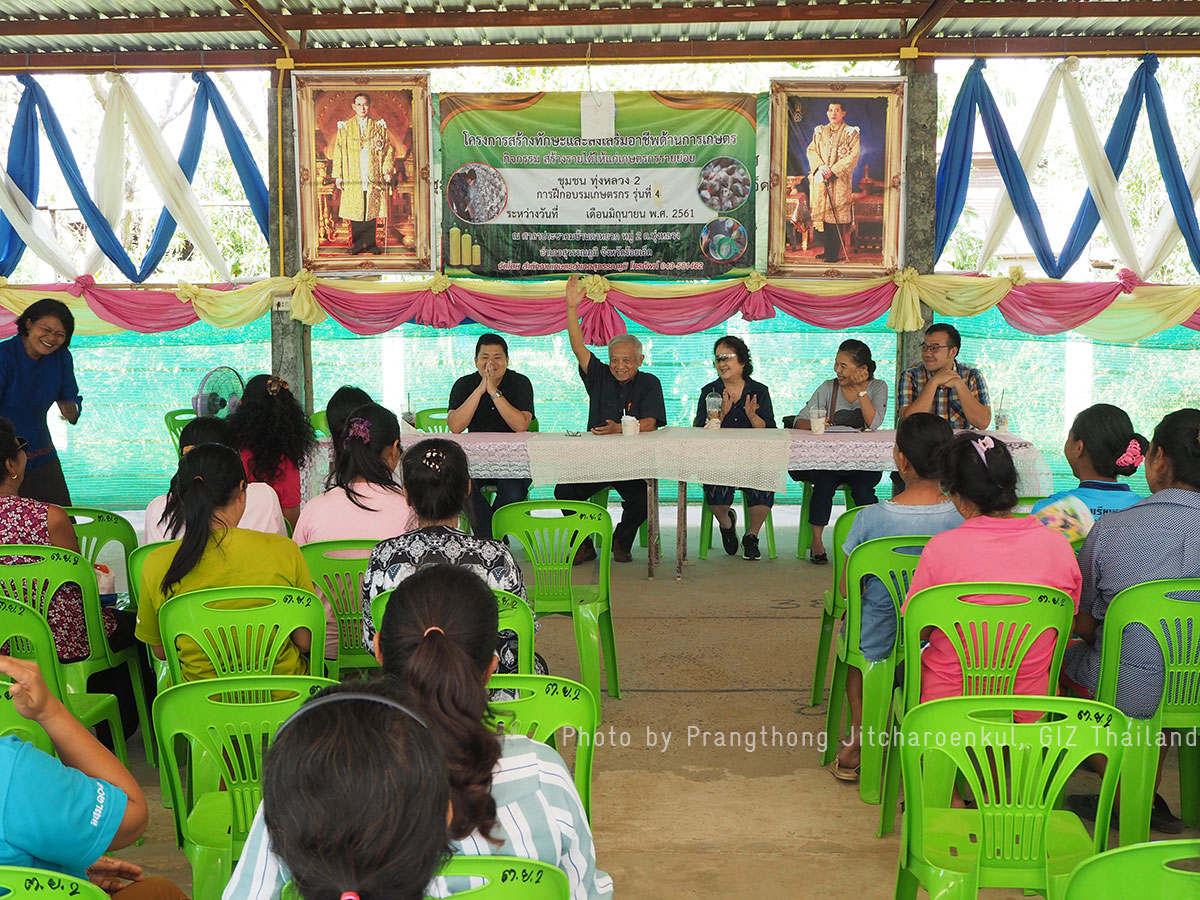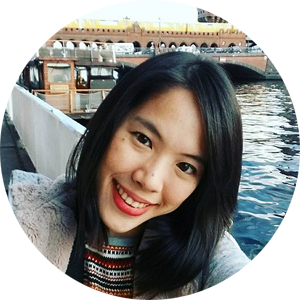Lampiang Suikong from the Roi Et province of Thailand grins from ear to ear when she talks about positive results she has seen through the changes she has made in her rice farming practice.
The 38-year-old female farmer living in Thung Kula Rong Hai (Kula crying field)1 whose rice fields have long been hit hard by drought no longer struggles to produce quality rice.
“I thought the fertilizer I had used for years was good enough until I joined the training. In the past months, I learned to better control and eliminate weed, monitor pests, apply the appropriate fertilizer, and improve soil fertility,” said Ms. Lampiang from Baan Ta Yuak, Suvarnabhumi district.
Ms. Lampiang is one of several participating farmers in the Northeast of Thailand who has attended a series of training through a public and private partnership cooperation called the Sustainable Aromatic Rice Initiative (SARI) Thailand project.
Ms. Lampiang’s latest yields are 700 kilograms per rai2, up 40% from last year.
“I take great care in every aspect of my farming because I also eat the rice I grow”, Ms. Lampiang expressed. “Farmers need to change our farming practices because the world is changing. We need to apply what we learn from the training alongside our traditional cultivating methods.”
She explained that farmers in Thung Kula Rong Hai, which covers areas in five provinces in the northeastern region of Thailand are facing climate change that is likely to intensify further.
“Climate change is getting worse and it badly affects those of us who live in rain-dependent areas.”
Ms. Lampiang decided to take part in the newly-launched project, a joint initiative by food companies – Mars Food, Herba- Bangkok (Ebro Foods) – the Thai Rice Department and GIZ, to provide local farmers the skills and knowledge to develop high-quality and sustainable Hom Mali rice with a climate-smart system to lessen climate change.
The project aims to support 1,200 rice growers from each of the 12 community rice centres in Roi Et province in the production of 3,500 metric tons of Hom Mali rice with the introduction of Sustainable Rice Platform (SRP) value chain.
The SRP is a multi-stakeholder platform established to promote sustainability in supply chains in the global rice sector, including research, policy making, production, trade and consumption.
In Roi Et, the project also cooperates with the millers to open collection points, which Ms. Lampiang says help cut her transport costs.
As the quality of Ms. Lampiang rice started to show improvement, many of her farmer friends in the same village expressed their interest in joining the project.
Kannika Boonrod, a 52-year-old leader of one of eight villages joining in this harvest season, explained that as well as raising crops and earnings, the project also strengthens cooperation and unity among the community’s members, especially when it comes to having women in the decision-making circles.
“Nearly 100 percent of the participating farmers from her village are women. They work alongside men,” said Ms Kannika.
The project has provided opportunity for female farmers to join, attend the training courses and be selected as the group committee, so they feel they can share their thoughts in their family and their community. They are more confident that they are a part of the community development.
1 Thung Kula Rong Hai literally translates as “fields of the crying Kula”. Legend has it that Kulas, from Mottama, Myanmar, traveled through this plateau. The Kula were known for their endurance and toughness. They spent several days traveling through the region without passing any villages or finding water. The surroundings had no trees to provide shade. It was only arid land. Trekking through this area was very difficult. The dry land and scarceness of water supply exhausted the tough Kulas and made them cry. The land takes its name from this story.
Historically, Thung Kula Rong Hai had suffered desert-like conditions during dry season and flooding during rainy season. Soils were plagued by salinity. The area has since been reclaimed and today the region has become a well-known rice producing area of Thailand.
Source – https://wikivisually.com/wiki/Thung_Kula_Ronghai
2 6.25 rai is equal to 1 hectare


